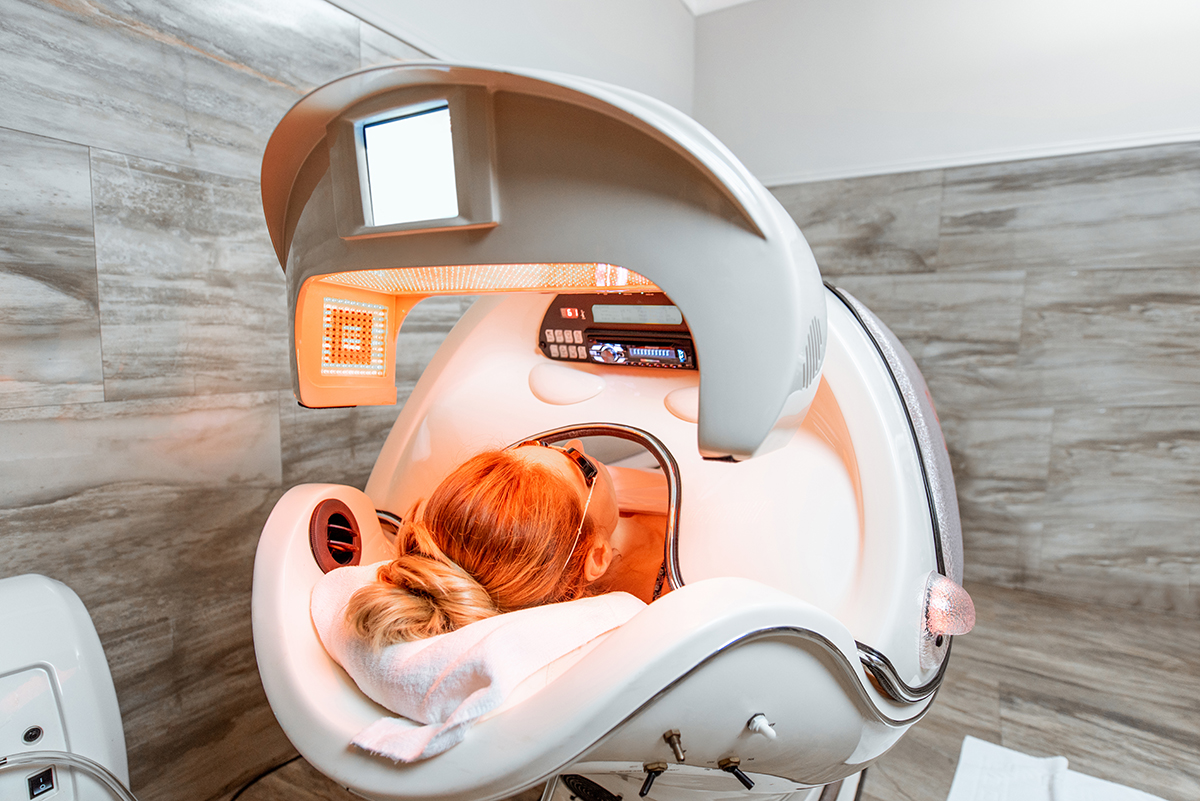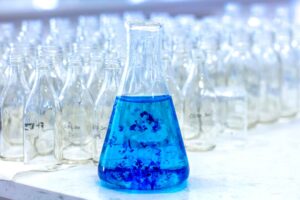Red light therapy is a non-invasive treatment that has been gaining popularity in recent years for its numerous health benefits. Some people are calling it the secret to youthful-looking skin, the newest anti-aging trend, the future of skincare and wellness, and even a breakthrough in holistic healing and biohacking.
The benefits of red light therapies are diverse, including improving skin appearance, reducing pain and inflammation, boosting energy and mood, enhancing athletic performance, accelerating wound healing, and improving sleep quality. It has been proven to be effective in stimulating collagen and elastin production, increasing blood flow and oxygenation, and reducing inflammation.
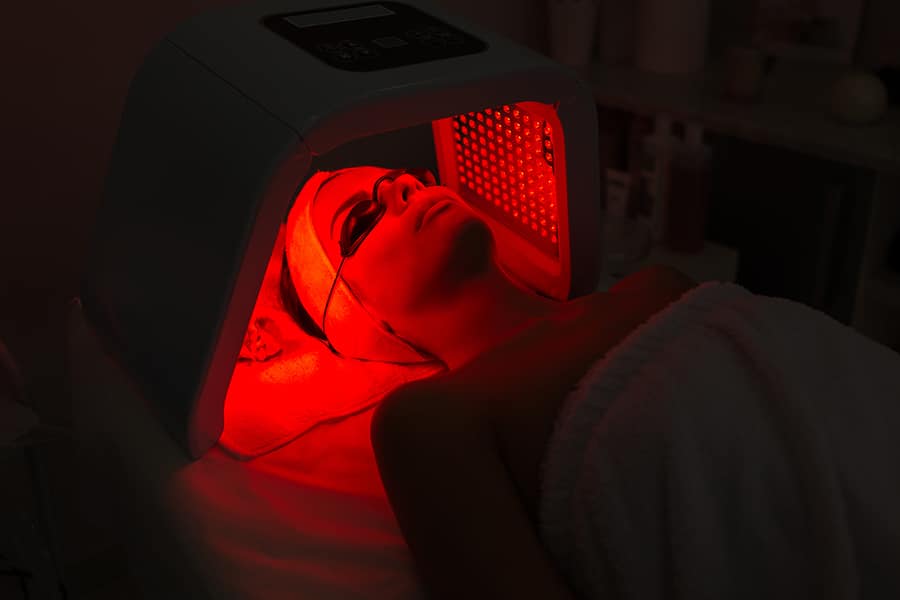
What is Red light therapy?
Red light therapy (RLT) is a treatment that uses low wavelength red light to reportedly improve the skin’s appearance, such as reducing wrinkles, scars, redness and acne[1][2][3][4]. It may also help with muscle tissue and other parts of the body healing[2]. Red light therapy is a type of photomedicine which uses light to treat skin and other health conditions[3]. It involves exposing the body to low levels of red and near infrared (NIR) light[5].
Red light therapy, also known as low level laser therapy or low level light therapy promotes healing and rejuvenation at a cellular level. It has been gaining popularity in recent years for its numerous health benefits like its ability to improve skin health, skin complexion, skin rejuvenation, skin conditions such as acne, reduce the appearance of fine lines and wrinkles and reduce the signs of aging due to its ability to stimulate collagen production.
It has also been shown to improve energy levels, relieve pain, and even improve wound healing. This has been supported by scientific evidence, including randomized controlled trials and systematic reviews.
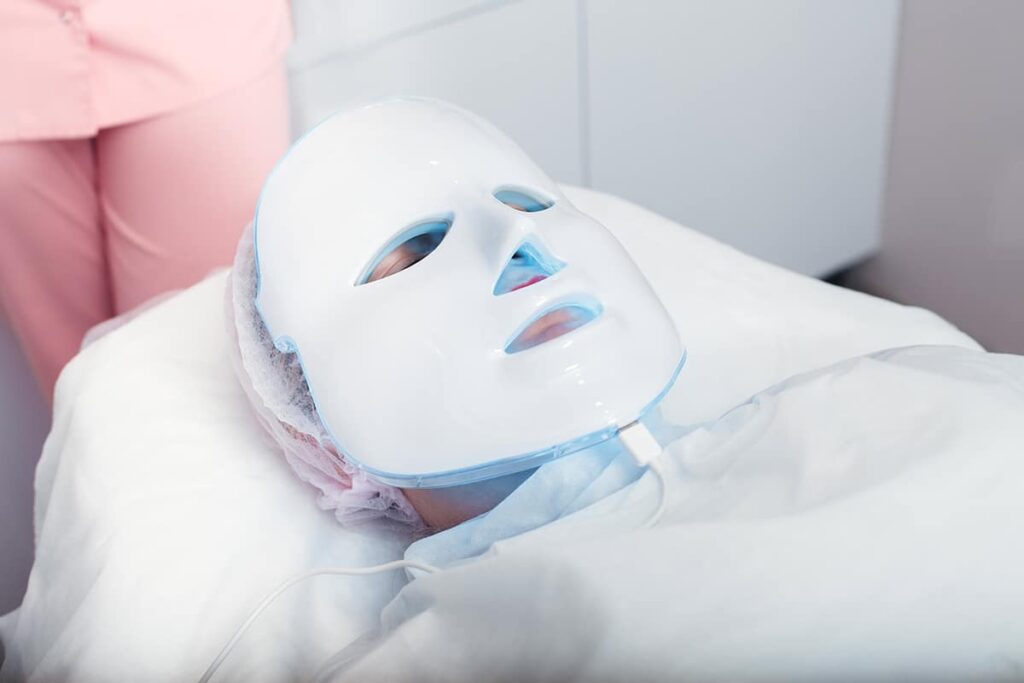
How is red light therapy different from blue light therapy?
Red light therapy and blue light therapy are both forms of LED light therapy used to treat various skin conditions[1][2]. Red light therapy penetrates the skin to stimulate collagen and reduce inflammation, while blue light helps treat skin conditions like acne[2][3]. Blue light has a shorter wavelength than red light on the electromagnetic spectrum and is delivered in the 400-nanometer range[4], whereas red light is delivered in the 600-nanometer range[5].

Is red light therapy effective?
Yes, red light therapy is definitely effective!
From my personal experience, I can attest to the benefits of red light therapy as I have been using it on my face for a while now with a device I purchased and have noticed a significant improvement in my skin tone and texture, my skin is clearer and my wrinkles and fine lines have reduced, there’s something magical that happens to your skin once you start doing it.
It’s is also a great alternative to traditional laser treatments, and it is considered a more natural approach to skin rejuvenation. It is also effective in treating moderate acne and reducing the effects of sun damage and tanning salons.
At a cellular level, red light therapy works by penetrating the skin and being absorbed by the human cells. This energy is then converted into cellular energy which helps with tissue repair, cell growth, and the overall function of the cells.
But it’s also not just for the skin! Red light therapy can also be used to give you more energy, improve your mood, enhance athletic performance, help with health conditions including treating rheumatoid arthritis, accelerate healing, and get you sleeping better while reducing skin aging.

When you use it on your whole body, it really helps soothe aching muscles by reducing inflammation and leaves you feeling amazing and uplifted!
For me, my muscles tend to get sore after I play golf and I love going to the spa to get the full body treatment at least one or twice a month.

Is red light therapy safe?
A red light treatment is considered generally safe since it’s a non-invasive treatment that does not involve any heat or UV rays radiation, so it does not pose any risk of sunburn or skin damage but there are a few potential risks and side effects associated with the treatment.
One possible side effect is that some people may experience skin irritation or redness after using a red light therapy device. (Make sure you get a good device!)
It is also important to avoid looking directly into the light and never use it on or near the eyes, it can cause damage to the eyes.
Also you should not be used on certain types of skin cancers, or on people who have a history of skin cancer or are at high risk of developing skin cancer.

What are the main skin conditions that it’s being used for?
Some of the most common skin conditions include:
Acne: It has been shown to reduce the appearance of acne by killing the bacteria that cause acne and reducing inflammation.
Wrinkles and fine lines: It can stimulate collagen and elastin production, which can help to reduce the appearance of wrinkles and fine lines, and improve skin tone and texture.
Sun damage and age spots: It stimulates the production of new skin cells and evens out skin pigmentation.
Rosacea, psoriasis and eczema: It can help reduce the symptoms by reducing inflammation and promoting healing.
Scarring: Since it promotes the production of new collagen and elastin it can help with scars.
Red light therapy benefits for the skin include:
Improving appearance
Red light therapy can help to improve the overall health and appearance of the skin by stimulating collagen and elastin production, promoting blood circulation and oxygenation, and reducing inflammation.

Reducing wrinkles and fine lines
Red light therapy can help to reduce the appearance of wrinkles and fine lines by stimulating collagen and elastin production, which can improve skin tone and texture.
Improving skin pigmentation
Red light therapy can help to even out skin pigmentation by stimulating the production of new skin cells and promoting the repair of damaged skin.
Reducing acne
Red light therapy can reduce the appearance of acne by killing the bacteria that cause acne and reducing inflammation.
Improving skin healing
Red light therapy can help to improve the healing of wounds and reduce scarring by promoting collagen and elastin production, and increasing blood flow and oxygenation to the skin.
Reducing redness and inflammation
Red light therapy can help to reduce redness and inflammation associated with conditions such as rosacea and eczema.
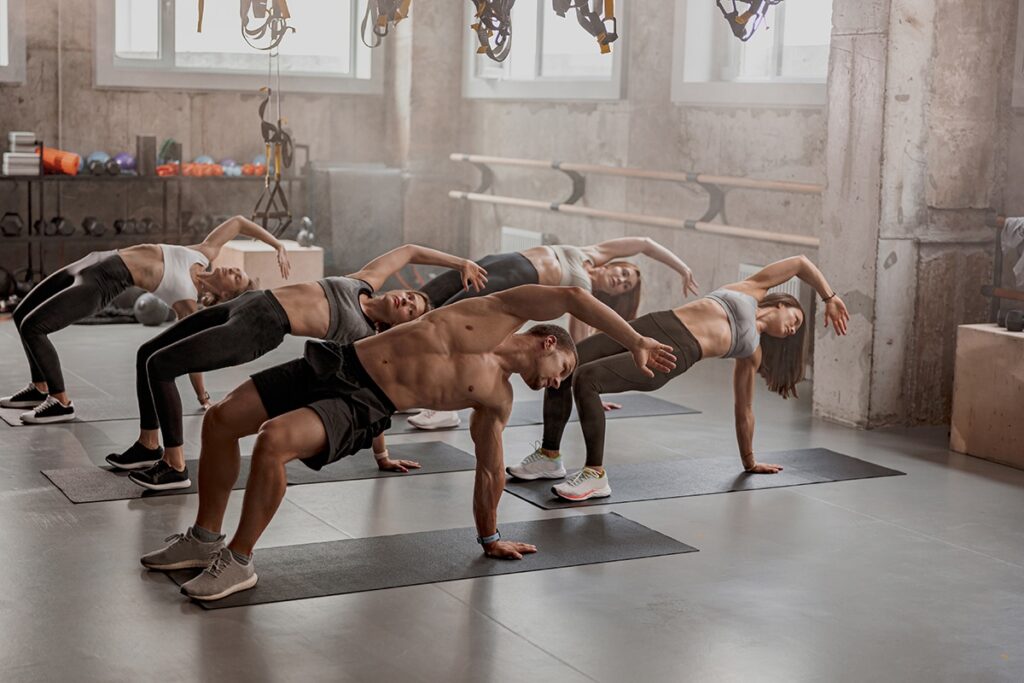
7 other red light therapy benefits
1. Boost Energy and Mood: Red light therapy can help boost energy and mood by increasing circulation and oxygenation to the brain, and by stimulating the production of endorphins, which are natural mood-boosting chemicals in the body.
2. Enhance Athletic Performance: Red light therapy can help enhance athletic performance by reducing muscle soreness and inflammation, promoting faster recovery, and increasing circulation and oxygenation to your muscles.
3. Improve Sleep Quality: Red light therapy can help improve sleep quality by stimulating the production of melatonin, which is responsible for regulating sleep.
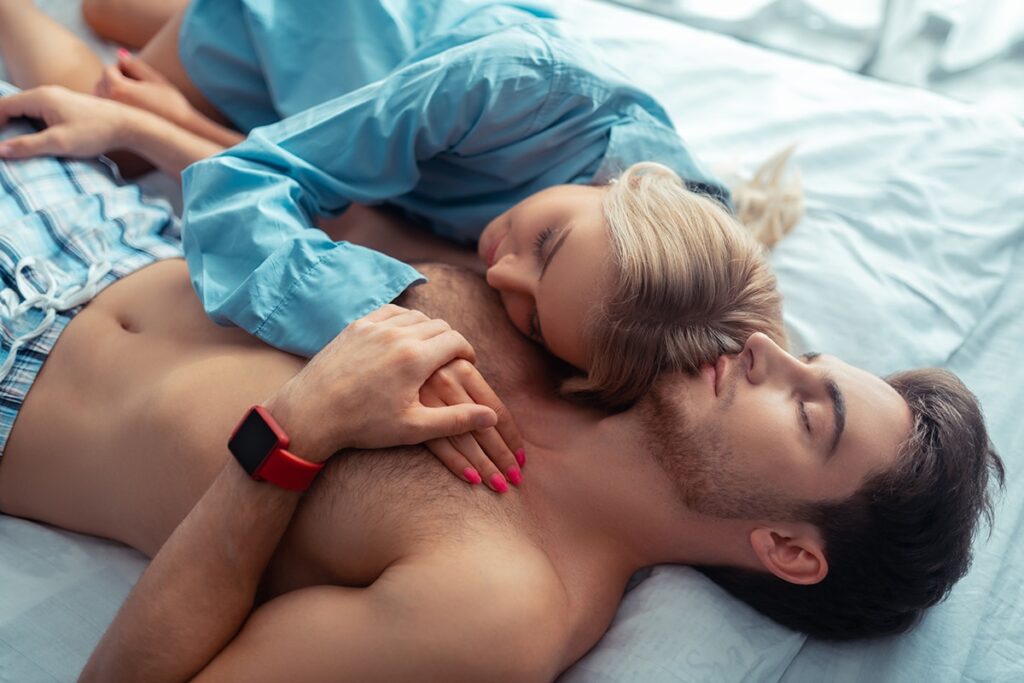
4. Reduce Symptoms of Depression and Anxiety: Red light therapy has been shown to reduce symptoms of depression and anxiety by stimulating the production of endorphins and by increasing circulation and oxygenation to the brain.

5. Improve Symptoms of Seasonal Affective Disorder (SAD): Red light therapy can help improve symptoms of Seasonal Affective Disorder (SAD) by mimicking the effects of natural sunlight and by stimulating the production of endorphins and serotonin, which are natural mood-boosting chemicals in the body.
6. Promote Hair Growth: It increases blood circulation and oxygenation to the scalp, and by stimulating the production of collagen and elastin, which are important for healthy hair.
7. Improve symptoms of joint pain and arthritis: Red light therapy can reduce inflammation and pain in joints and improve the overall mobility and flexibility in people with conditions such as arthritis.
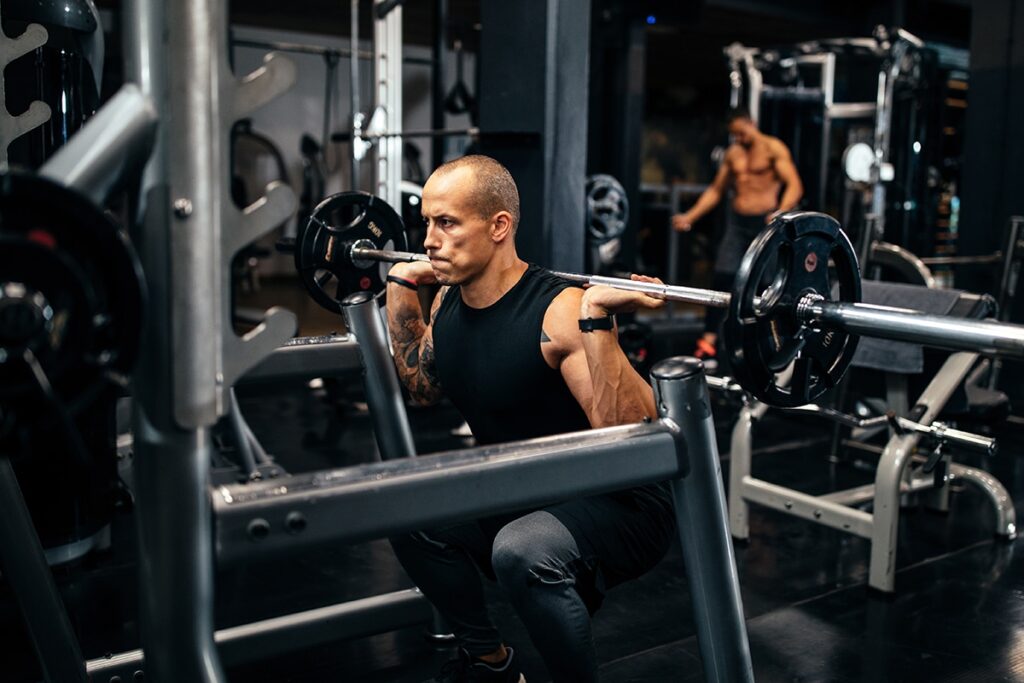
Can I buy a device and use it at home?
Yes you can!
The level of laser light therapy can be adjusted in these making them a popular choice for low power laser therapy. They’re also a a great option for people who are sensitive to light or new to red light therapy.
There are different types of devices available, I have an at home device myself.
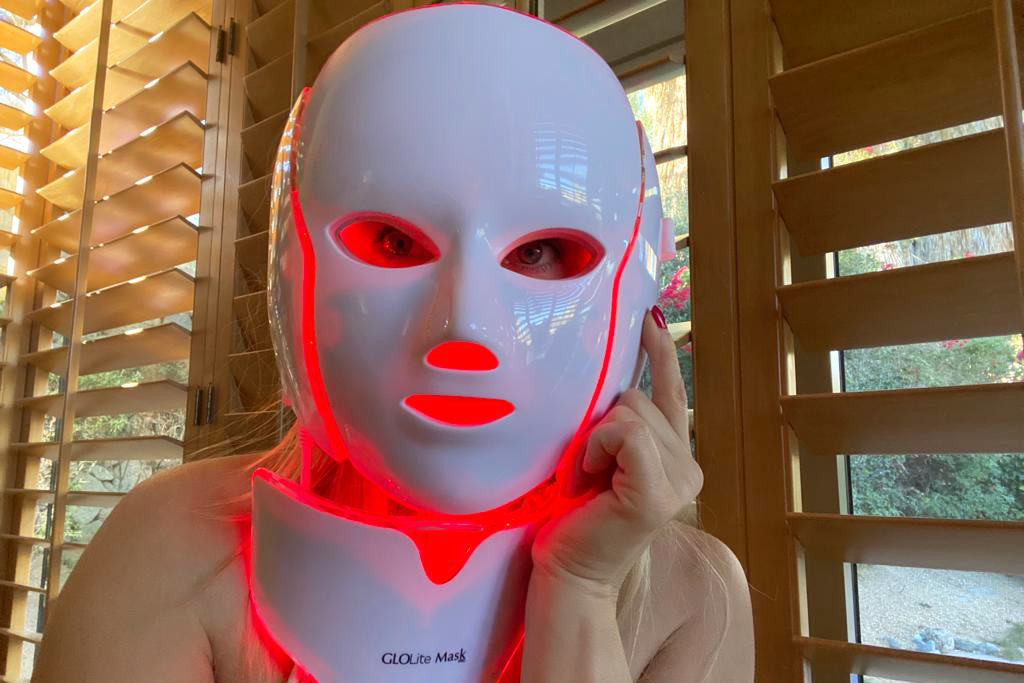
The one I use for my face is the 7 Color Pro by Georgia Louise Brands (I’m not an affiliate, just love the brand!).
Red light devices purchased for at-home use can be a safe and reasonable option if they are of good quality and emit the correct wavelengths of light.
Just make sure to always follow the recommended usage instructions and not to overuse the device. Start with a low dosage and gradually increase as your skin adapts to the treatment.
Generally, I’d say to use red light therapy devices 2-3 times a week for the first couple of weeks, and then reduce the frequency to 1-2 times a week for maintenance.

With a positive approach and a motivation mindset, you will reach your health goals, no matter how hard they may seem at first. Learn more about my one-on-one coaching program here.
FAQ
Red light therapy, also known as photobiomodulation therapy, is a non-invasive treatment that uses specific wavelengths of red and near-infrared light to promote healing and rejuvenation at a cellular level.
The light energy is absorbed by the cells and converted into cellular energy, which can improve the overall function of the cells and promote healing and rejuvenation.
Improving skin health and appearance, reducing pain and inflammation, boosting energy and mood, enhancing athletic performance, accelerating wound healing, and improving sleep quality.
It is recommended to start with a low dosage and gradually increase as your skin adapts to the treatment. Generally, it is recommended to use devices 2-3 times a week for the first couple of weeks, and then reduce the frequency to 1-2 times a week for maintenance.
Yes, red light therapy can be used on the face, it can even help with skin rejuvenation and even with treating acne!
There are different types of at home devices available, such as handheld devices, light panels, and masks. Each device emits different wavelengths of light, so it's important to choose the right device for your specific needs and consider the quality of the device and its source. It's also important to ensure that the device has been cleared by the FDA.
Yes, red light therapy it's very effective in reducing pain if you have sore muscles after a workout for example.
This depends on the person, some people may see results within a few sessions, while others may take longer.
Resources
1. Red Light Therapy: Benefits, Side Effects & Uses
2. Red Light Therapy: Effectiveness, Treatment, and Risks
3. What Is Red Light Therapy? A Detailed Beginner’s Guide
4. Red Light Therapy: Uses, Benefits, and Risks – Healthline
5. Does Red Light Therapy Work? – Joovv
6. LED Light Therapy: How It Works, Colors, Benefits & Risks
7. How are Red and Blue Light Therapy Devices Different?
8. Red vs Blue Light Therapy: Which Is Best for Your Skin?
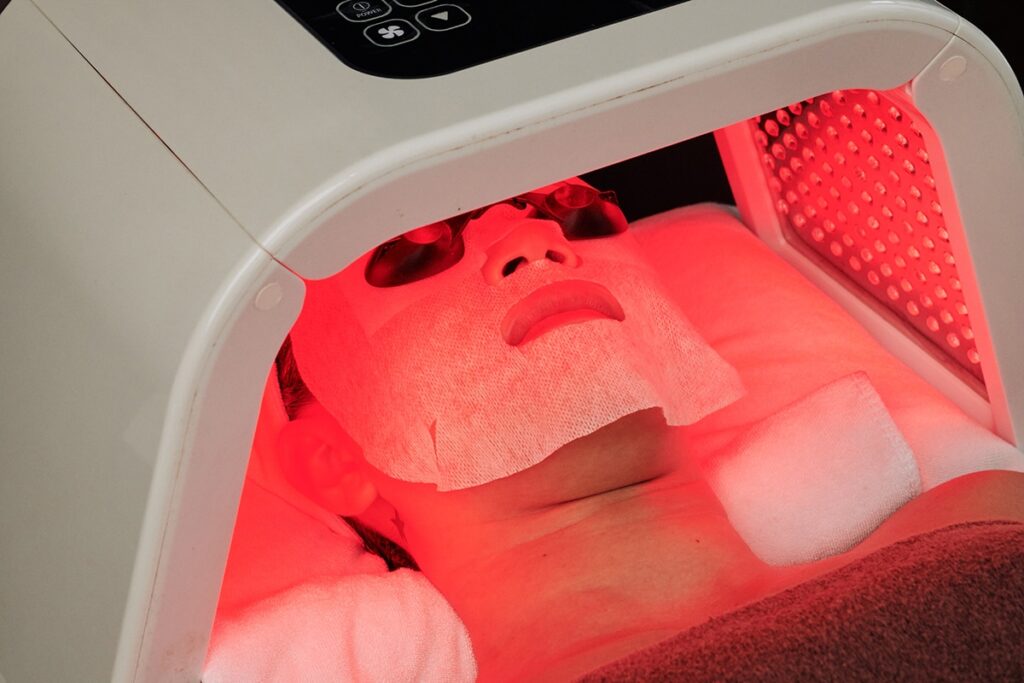
Conclusion
In conclusion, red light therapy is a non-invasive treatment with a range of benefits for health and wellness. It can improve really improve your skin, reduce pain and inflammation, boost energy and mood, enhance athletic performance, and more.
For those interested in trying red light therapy, it’s important to do your research and purchase a device that has been cleared by the FDA and that emits the correct wavelengths of red and near-infrared light.
I’ve personally seen great results myself and with my clients who have used it, and I believe in its potential to improve health and wellness.
